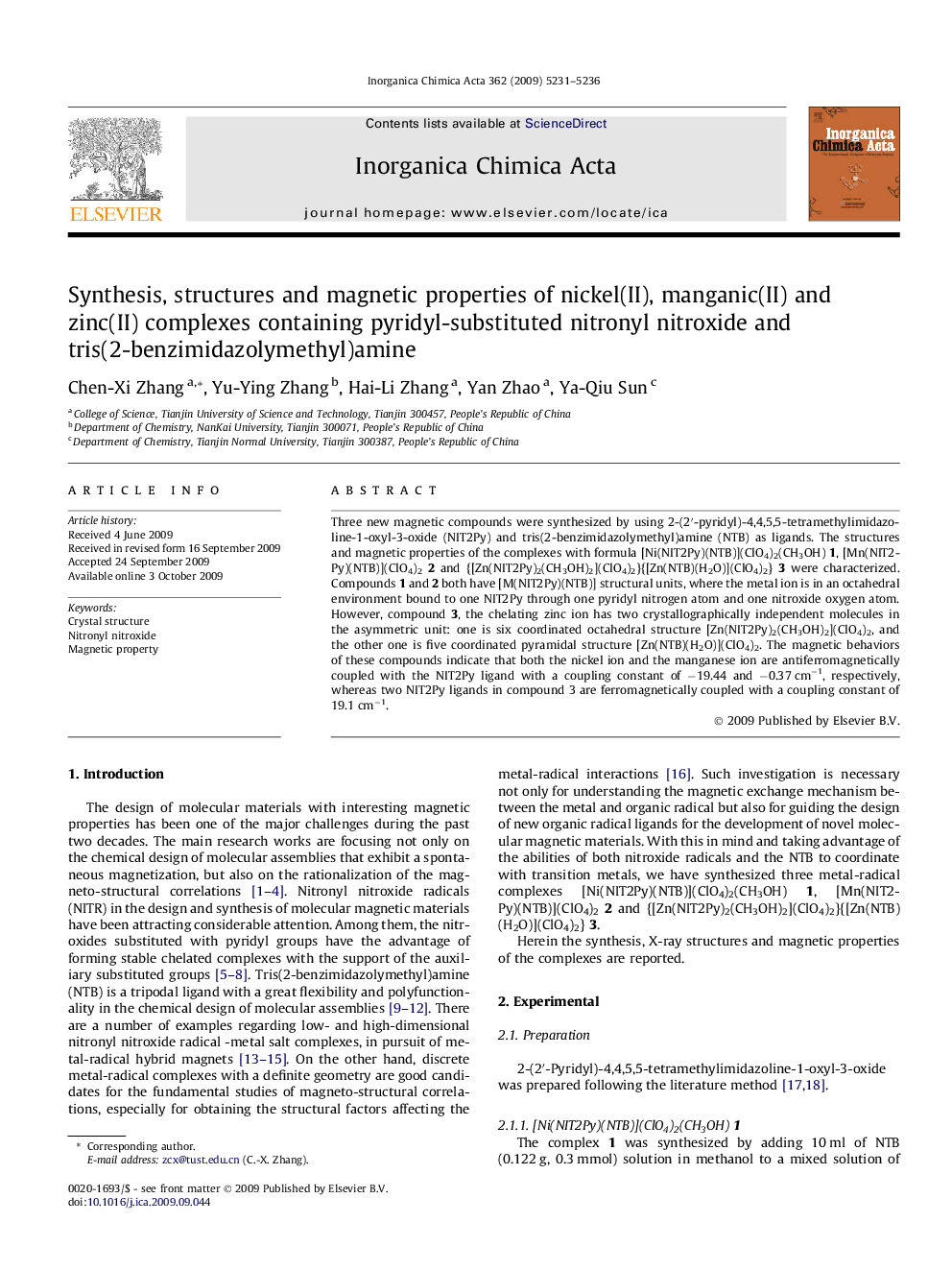| Article ID | Journal | Published Year | Pages | File Type |
|---|---|---|---|---|
| 1311350 | Inorganica Chimica Acta | 2009 | 6 Pages |
Three new magnetic compounds were synthesized by using 2-(2′-pyridyl)-4,4,5,5-tetramethylimidazoline-1-oxyl-3-oxide (NIT2Py) and tris(2-benzimidazolymethyl)amine (NTB) as ligands. The structures and magnetic properties of the complexes with formula [Ni(NIT2Py)(NTB)](ClO4)2(CH3OH) 1, [Mn(NIT2Py)(NTB)](ClO4)22 and {[Zn(NIT2Py)2(CH3OH)2](ClO4)2}{[Zn(NTB)(H2O)](ClO4)2} 3 were characterized. Compounds 1 and 2 both have [M(NIT2Py)(NTB)] structural units, where the metal ion is in an octahedral environment bound to one NIT2Py through one pyridyl nitrogen atom and one nitroxide oxygen atom. However, compound 3, the chelating zinc ion has two crystallographically independent molecules in the asymmetric unit: one is six coordinated octahedral structure [Zn(NIT2Py)2(CH3OH)2](ClO4)2, and the other one is five coordinated pyramidal structure [Zn(NTB)(H2O)](ClO4)2. The magnetic behaviors of these compounds indicate that both the nickel ion and the manganese ion are antiferromagnetically coupled with the NIT2Py ligand with a coupling constant of −19.44 and −0.37 cm−1, respectively, whereas two NIT2Py ligands in compound 3 are ferromagnetically coupled with a coupling constant of 19.1 cm−1.
Graphical abstractThree new nickel, manganese and zinc complexes by using 2-(2′-pyridyl)-4,4,5,5-tetramethylimidazoline-1-oxyl-3-oxide and tris(2-benzimidazolymethyl)amine as ligands have been prepared and characterized structurally and magnetically.Figure optionsDownload full-size imageDownload as PowerPoint slide
